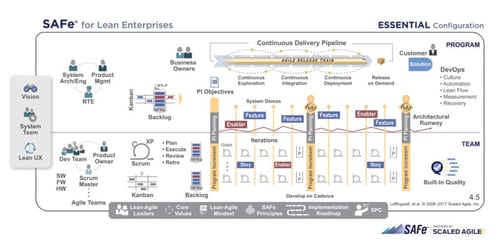Three things corporations can learn from startups
When Helsingin Sanomat reporter Juha-Pekka Raeste scoffed corporations for imitating startups, I chuckled at first, but then I then I was filled with sadness.
Does anyone for real think that contrived buzz or even momentary genuine buzz will amount to anything at all? Especially if one keeps turning a blind eye on problems.
If corporations wish to learn something from startups, instead of buzz they should take a look at these three themes:
- Approach to technical debt
- Pivoting
- Identifying core competence

Technical debt – no one or nothing will stay young forever
Digitalisation is the corporations’ beacon of truth, mercilessly revealing the inevitable fact that a beautifully aging system no longer cuts it. The systems of corporations carry plenty of technical debt, and in some cases, it has been accumulating since the 1970’s. Back in the day, with only the in-house staff tinkering with the systems, rigidity and slow development wasn’t a problem. Now that the systems should allow the building of consumer services – and fast at that – the old way doesn’t work anymore.
There is something funny yet deeply disturbing about projects aiming to renew even decades old legacy systems, but technical debt incurs in developing toddler-aged systems as well. Since many of the young systems too have been turned into knots, nothing can be quickly or nimbly built on them either.
Digitalisation is the corporations’ horn of truth.
Although technical debt incurs in startups too, companies relying on reinventing themselves can’t just turn a blind eye on their debt. Young companies simply can’t afford to populate their backlogs with things that cannot be brought to production due to technical debt.
In a situation where technical debt has been incurred, one should think about the role of the design department, for example. Is it wise to invest in doing something new until some of the technical debt has been repaid?
However, in case of a gigantic legacy system and replacing it, one should look into other options besides replacing the old system with an equivalent gigantic approach: modern technology and new models may offer entirely new kinds of implementations.

Pivoting – searching for creative alternatives
By imitating startup companies, corporations have been trying to break in a culture where it’s OK to fail and make mistakes. I think this too is pretty lame. You see, it would be much smarter to learn how to pivot.
Pivoting is about admitting the facts and implementing ”plan B”. There are plenty of examples of successful pivoting. Our own Nokia was one of them, but how many of you know that the popular photo-sharing application Instagram was originally designed for sharing location data? When that idea didn’t fly, what was left was the photo-sharing – and boom, it was a success!
Pivoting is something that typically happens after a failure and that turns the tide, giving the company a new start.
Pivoting is about admitting the facts and implementing ”plan B”.
Whenever I recommend corporations to adopt the culture of pivoting, I’m not talking about pivoting their business but pivoting their digital transformation projects.
Being able to admit that things went south will allow companies to step back and take a closer look on their systems crippled by technical debt and find out if it is possible to build something better on it. If, for example, online sales are slow, it is no use resuscitating it nor run it down, but you should think of an alternative strategy: would, for instance, focusing on a certain niche make your online sales profitable? Or could your content marketing be revived through podcasts or blog portals?
In other words, there are many ways to pivot digital projects. Unfortunately, however, companies tend to hang on to things that don’t work. Either they don’t want or dare to admit failure – or they simply lack in creativity to come up with alternative ways to proceed.
If this is the case, you should first of all focus on pivoting the operating models in your organisation.

Core competence – the skills of this millennium
Big corporations try to imitate startup companies, setting up departments within the company which are allowed to operate as startups.
This is exactly how narrow an understanding people often have of digital transformation. Companies tend to build up competence and resources in areas that are traditionally seen as digital, even though digital transformation is something that affects the entire company. The digitalisation of a company’s core business can’t be isolated into one team, but it is considerably smarter to enable cooperation beyond organisational boundaries. Design departments, for example, do not necessarily produce anything directly to the customer, but they have an important task of spreading Design Thinking throughout the organisation. In other words, competence must not be locked into teams.
Personally, I would point out the so-called ”skills of this millennium” as the drivers of digital transformation, even though teaching these skills to people isn’t that straight-forward.
The skills of this millennium are as follows:
- Learning skills (cooperation and problem solving, communication, critical thinking, creativity)
- Literacy (information, media, technology)
- Career and life skills (flexibility, initiative, social skills, productivity, leadership skills)
To me, more than anything else, the skills of this millennium present themselves as the prerequisites for fruitful cooperation.
These skills are believed to help people amidst the information flood, in a constantly transforming world. With competence becoming more and more fragmented, no one can survive by themselves. At least to me, more than anything else, the skills of this millennium present themselves as the prerequisites for fruitful cooperation. Cooperation that tears down silos and steers development naturally away from the waterfall model, towards iterative design that takes place together with users.
In other words, in building digital world we need experts who, besides substance knowledge, command all the skills of this millennium.



